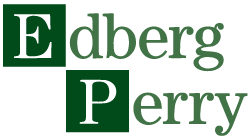Auto-enrollment has been proven to be effective in raising participation rates in 401(k) plans. As a result, it’s been pretty widely adopted across the country, especially in mid- to larger plans. Automatic enrollment creates a situation where many employees fail to make an investment election on their own. This creates a need for a default investment in the lineup. A cash fund has no risk, but also has no growth potential. Other investments may have income or growth potential, but expose a plan sponsor to fiduciary risk by making the decision to direct such contributions. As a result, the industry and regulators realized that it was important to establish what would become known as a Qualified Default Investment Alternative or QDIA.
A QDIA is designed to meet the criteria of ERISA section 404(c) which provides plan sponsors with a safe harbor from fiduciary liability for investment decisions made by participants in their 401(k) accounts. In other words, if a plan sponsor offers a QDIA as their default investment, they won’t be liable for investment losses related to contributions made on behalf of participants who failed to make their own investment choices.
Under the regs, a QDIA can be either a target date fund, a balanced fund or a professionally managed account. It’s important to note that the selection of one of these needs to reflect the age and income ranges of the employee population as well as the sophistication of the plan fiduciaries and availability of investment managers. Employees must also always be able to opt out of the the QDIA and self-direct their investments if they wish.
Offering a QDIA doesn’t alleviate all of the fiduciary liability a plan sponsor has, but it does eliminate their risk related to the default investment of the plan when it’s used for contributions by employees who enroll but who fail to make their own elections. A QDIA makes the idea of offering auto-enrollment more attractive, and that can drive greater plan participation and improve plan cost efficiency.
Let us know if you’d like to review this topic together or with plan sponsors. We’re happy to help.



